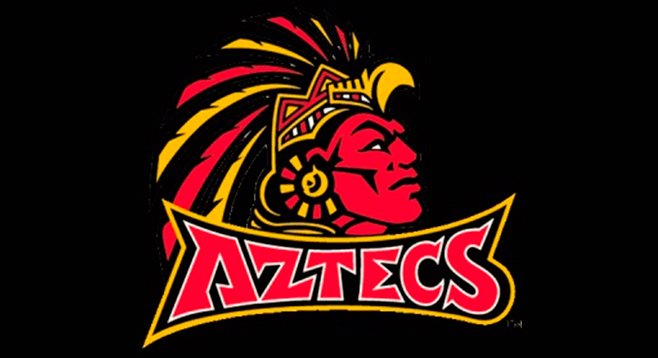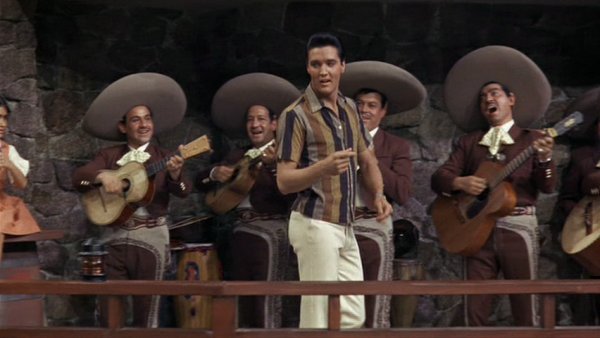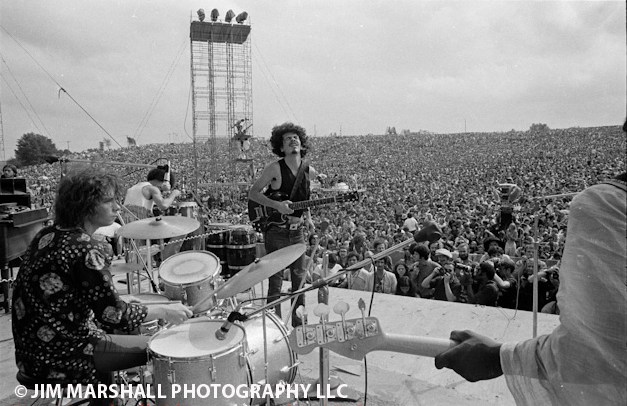2
















| Thumbs Up |
| Received: 7,874 Given: 12,909 |

San Diego St University Aztecs
San Diego State University (SDSU, San Diego State) is a public research university in San Diego, California, and is the largest and oldest higher education institution in San Diego County. Founded in 1897 as San Diego Normal School, it is the third-oldest university in the 23-member California State University (CSU). SDSU has a Fall 2016 student body of 34,688 and an alumni base of more than 280,000.[9]
From 2006 to 2010, SDSU was ranked the No. 1 most productive research university among schools with 14 or fewer PhD programs based on the Faculty Scholarly Productivity Index. The school has since exceeded the "small research" limit with 17 PhD programs, in addition to six professional doctorates. SDSU has been designated a "Research University" with high research activity by the Carnegie Foundation. Since 2000, SDSU faculty and staff have attracted more than $1.5 billion in grants and contracts for research and program administration.[86] As a result, U.S. News & World Report classifies San Diego State University as a "National University", whereas all other 22 campuses in The California State University system are classified as "Regional Universities".[84]
SDSU is the highest enrolled university in the San Diego metropolitan area. One in seven adults in San Diego who holds a college degree attended SDSU. In 2013, SDSU was lauded for its comprehensive endowment campaign efforts, which raised over $400 million from 2007 to 2013. The Council for Advancement and Support of Education recognized SDSU for its overall performance in fundraising efforts.[87]
Money Magazine ranked San Diego State 116th in the country out of over 1500 schools it evaluated for its 2015 Best Colleges ranking.[89]















| Thumbs Up |
| Received: 7,874 Given: 12,909 |

Mexican standoff
A Mexican standoff is a confrontation between two or more parties in which no participant can proceed or retreat without being exposed to danger. As a result, all participants need to maintain the strategic tension, which remains unresolved until some outside event makes it possible to resolve it.
The Mexican standoff is a recurring trope in cinema, where several armed characters hold each other at gunpoint.
The expression came into use during the last decade of the 19th century.
The earliest print cite to the phrase was 19 March 1876 in a short story about Mexico, an American being held up by a Mexican bandit, and the outcome:
"Go-!" said he sternly then. "We will call it a stand-off, a Mexican stand-off, you lose your money, but you save your life!".
Popular use
In popular use, the term "Mexican standoff" is sometimes used in reference to confrontations in which neither opponent appears to have a measurable advantage. Historically, commentators have used the term to reference the Soviet Union – United States nuclear confrontation during the Cold War, specifically the Cuban Missile Crisis of 1962. The key element that makes such situations "Mexican standoffs" is the equality of power exercised among the involved parties.[1] The inability of any particular party to advance its position safely is a condition common among all standoffs; in a "Mexican standoff," however, there is an additional disadvantage: no party has a safe way to withdraw from its position, thus making the standoff effectively permanent.
In financial circles, the Mexican standoff is typically used to denote a situation where one side wants something, a concession of some sort, and is offering nothing of value. When the other side sees no value in agreeing to any changes, they refuse to negotiate. Although both sides may benefit from the change, neither side can agree to adequate compensation for agreeing to the change, and nothing is accomplished.
A Mexican standoff where each party is pointing a gun at another is now considered a movie cliché, stemming from its frequent use as a plot device in cinema. A famous example of the trope is in Sergio Leone's 1966 Western The Good, The Bad and The Ugly, where three characters face each other at gunpoint.[4] Director Quentin Tarantino has featured Mexican standoff scenes in his films, including the climactic scene of Reservoir Dogs, which depicts a standoff between four characters.[5]















| Thumbs Up |
| Received: 2,071 Given: 847 |

I discovered Tacos and Burritos some years ago and I love them my friend














| Thumbs Up |
| Received: 7,874 Given: 12,909 |

The Mexican movie
The Mexican is a 2001 American comedy film directed by Gore Verbinski and starring Brad Pitt and Julia Roberts, with a plot that is a mixture of romantic comedy, adventure and road movie.
The story follows Jerry Welbach as he travels through Mexico to find a valuable antique gun, The Mexican, and smuggle it into the United States. Five years earlier, Welbach had caused a traffic accident in which he hit the car of local mobster Arnold Margolese, who was jailed for five years after the police searched his car following the crash, finding someone tied up in his trunk. In compensation for the jail time, Welbach has been sent on various errands by Margolese's prickly second-in-command, Bernie Nayman. Retrieving the gun will be his final errand. Welbach has a girlfriend, Samantha, with whom he argues constantly and who leaves Jerry prior to the trip over his lack of commitment to their relationship.
Jerry arrives in Mexico and makes his way to pick up Beck, the Margolese employee now in possession of the gun. There, a drunken Beck tells Jerry about the gun's history as a suicide weapon used as part of a jilted love-triangle between a woman, a nobleman, and the son of the gunsmith who forged the weapon, as well as its curse to misfire. Jerry helps Beck to his car, only for the man to be killed by celebratory gunfire from a nearby festival.
Panicked but determined, Jerry buries the body and then calls Bernie to report on the situation, only for his vehicle to be stolen while he makes the call, the gun still inside. Jerry briefly has an uncooperative donkey as transportation to follow the thief, then buys an old, damaged truck.
Budget $57 million
Box Office $147.8 million














| Thumbs Up |
| Received: 7,874 Given: 12,909 |














| Thumbs Up |
| Received: 7,874 Given: 12,909 |

Mendoza Line
The Mendoza Line is an expression in baseball in the United States, deriving from the name of shortstop Mario Mendoza, whose poor batting average is taken to define the threshold of incompetent hitting. The cutoff point is most often said to be .200[1] (although Mendoza's career average was .215) and, when a position player's batting average falls below that level, the player is said to be "below the Mendoza Line". This is often thought of as the offensive threshold below which a player's presence in Major League Baseball cannot be justified, regardless of his defensive abilities. The term is used in other contexts when one is so incompetent in one key skill that other skills cannot compensate for that deficiency.
Origin of the term
Mendoza, an effective defensive player from Chihuahua, Mexico, played for the Pittsburgh Pirates, Seattle Mariners, and Texas Rangers and usually struggled at the plate. Mendoza was known as a sub-.200 hitter whose average frequently fell into the .180 to .199 range during any particular year — four times in the five years from 1975 to 1979.
The "Mendoza Line" was created as a clubhouse joke among baseball players in 1979, when from early May onwards, Mendoza's average was always within a few points of .200 either way, finishing out the season at .198 for the year (and .201 for his career to that point). "My teammates Tom Paciorek and Bruce Bochte used it to make fun of me," Mendoza said in 2010. "Then they were giving George Brett a hard time because he had a slow start that year, so they told him, 'Hey, man, you're going to sink down below the Mendoza Line if you're not careful.' And then Brett mentioned it to Chris Berman from ESPN, and eventually it spread and became a part of the game." Berman deflects credit back to Brett in popularizing the term. "Mario Mendoza?—it's all George Brett," Berman said. "We used it all the time in those 1980s SportsCenters. It was just a humorous way to describe how someone was hitting."[2]
Mendoza had two more full years in the majors, with a handful of plate appearances in 1982; his hitting improved noticeably in that stretch, so that by the end of his career, his batting average had risen to .215.[3] By that point, however, the phrase was already embedded in baseball culture.
Other uses
"A sub-$2,000 per theater average... is the Mendoza Line of box office numbers.
"I don't think you could find any other figure in politics who has run this far below the Mendoza line and still managed to get taken seriously as a presidential candidate."[6]
"Republican pollster Neil Newhouse... argues that these numbers have crossed below the political 'Mendoza line'..."[7]
"The U.S. 10-year note yield declined below 2%... before moving back above the Mendoza Line (baseball lingo for a batting average of .200), to 2.09% by early afternoon."[8]





| Thumbs Up |
| Received: 6,589 Given: 3,544 |

Carlos Santana.
and my favorite album, caravanserai.














| Thumbs Up |
| Received: 7,874 Given: 12,909 |

Movie: Fun In Acapulco
Fun in Acapulco is a 1963 American musical comedy film starring Elvis Presley and Ursula Andress.
Mike Windgren"Elvis" works on a boat in Acapulco, Mexico. When Janie Harkins, the bratty daughter of the boat owner, gets him fired, Mike must find new work. A Mexican boy named Raoul helps him get a job as a lifeguard and singer at a local hotel. Clashes abound when Mike runs into a rival lifeguard, who is the champion diver of Mexico. He is angry at Mike for taking some of his hours, and for stealing his woman.
https://www.youtube.com/watch?v=jc8Mr8v9HF8
Elvis Presley with Ursula Andress and Elsa Cárdenas in a promotional picture of the film.
cast
Elvis Presley as Mike Windgren
Ursula Andress as Margarita Dauphin
Elsa Cárdenas as Dolores Gomez
Alejandro Rey as Moreno
Genaro Gomez as Bullfighter (uncredited)
box office $3,100,000 (US/ Canada)[1]















| Thumbs Up |
| Received: 7,874 Given: 12,909 |

cool
Santana was born in Autlán de Navarro, Jalisco, Mexico. He learned to play the violin at age five and the guitar at age eight under the tutelage of his father, a mariachi musician. His younger brother, Jorge Santana, would also become a professional guitarist. Young Carlos was heavily influenced by Ritchie Valens at a time when there were very few Mexicans in American rock and pop music. The family moved from Autlán de Navarro to Tijuana, the city on Mexico's border with California, and then San Francisco. Carlos stayed in Tijuana but later joined his family in San Francisco, graduating from James Lick Middle School, and in 1965 from Mission High School. Carlos was accepted at California State University, Northridge, and Humboldt State University, but chose not to attend college.[citation needed]
Carlos Santana (born July 20, 1947) is a Mexican and American musician who first became famous in the late 1960s and early 1970s with his band, Santana, which pioneered a fusion of rock and Latin American music. The band's sound featured his melodic, blues-based guitar lines set against Latin and African rhythms featuring percussion instruments such as timbales and congas not generally heard in rock music. Santana continued to work in these forms over the following decades. He experienced a resurgence of popularity and critical acclaim in the late 1990s.
He has won 10 Grammy Awards and three Latin Grammy Awards.[4]
Carlos Santana, alongside the classic Santana lineup of their first two albums, was inducted as an individual, into the Rock and Roll Hall of Fame in 1998. He performed "Black Magic Woman" with the writer of the song, Fleetwood Mac's founder Peter Green. Green was inducted the same night.
In 2000, Supernatural won nine Grammy Awards (eight for Santana personally), including Album of the Year, Record of the Year for "Smooth", and Song of the Year for Thomas and Itaal Shur. Santana's acceptance speeches described his feelings about music's place in one's spiritual existence.
Santana won eight awards at the 42nd GRAMMYs in 2000, tying Michael Jackson for the most awards won in one night
Santana in Woodstock

Last edited by RMuller; 05-09-2017 at 11:18 PM.














| Thumbs Up |
| Received: 7,874 Given: 12,909 |

Salsa outsells ketchup as American tastes change
Salsa overtaking ketchup as America's No. 1 condiment was just the start.
These days, tortillas outsell burger and hot dog buns; sales of tortilla chips trump potato chips; and tacos and burritos have become so ubiquitously "American," most people don't even consider them ethnic.
Welcome to the taste of American food in 2013.
As immigrant and minority populations rewrite American demographics, the nation's collective menu is reflecting this flux, as it always has. And it goes beyond the mainstreaming of once-esoteric ethnic ingredients, something we've seen with everything from soy sauce to jalapenos.
This is a rewrite of the American menu at the macro level, an evolution of whole patterns of how people eat.
"When you think about pizza and spaghetti, it's the same thing," says Jim Kabbani, CEO of the Tortilla Industry Association. "People consider them American, not ethnic. It's the same with tortillas."
With Hispanics making up more than a quarter of the U.S. population today — and growing fast — experts say this change is dramatically flavoring the American culinary experience. Mexican foods and beverages were an $8 billion market in the last year, according to consumer research firm Packaged Facts. By 2017, that number may reach $11 billion.
And that's influencing how all Americans eat. Doritos, after all, are just tarted-up tortilla chips.
As the entire menu of the American diet gets rewritten, the taste is getting spicier, with salsa and chipotle popping into the mainstream vernacular. And onto your dinner table: Marie Callender's has grilled shrimp street tacos with chipotle ranch dressing; Whataburger has a fire-roasted blend of poblano peppers in its chicken fajita taco; and there's tomatillo verde salsa in the baja shrimp stuffed quesadilla from El Pollo Loco.
From queso fresco to chorizo, traditional Mexican foods — or even just the flavors of them — are making their way into our everyday diet, particularly among the millennials — those born between the early '80s and the turn of the century. Generation Y's Mexican-American community was born into an American culture but still holds onto its traditions, often eating beans and rice and seamlessly switching between English and Spanish.
"They are looking for products that are not necessarily big brands anymore," says Michael Bellas, chairman of the Beverage Marketing Corporation. "They like brands that have character. They are looking for authenticity and purity, but they are also looking for new experiences."
For example, popular among the millennials and other generations on the West Coast is the Mexican soda Jarritos, which boasts real fruit flavors ranging from mango to guava. The company's site showcases a collage of photos taken by Generation Y soda drinkers. Brightly colored sodas pop through their clear vintage-looking bottles. And the bottle caps share a simple message: "Que buenos son," or "They're so good."
Another Mexican beverage making ever more rounds in households across America is tequila.
In 2006, nearly 107 million of liters of tequila were exported to the U.S., a 23 percent increase over 2005, according to Judith Meza, representative of the Tequila Regulatory Council. Tequila entered the top 10 of liquors in the world five years ago, she said.
Even our choice of side dishes is feeling the influence. In general, Americans are eating fewer of them.
The same survey also found chefs touting taquitos as appetizers; ethnic-inspired breakfast items such as chorizo scrambled eggs; exotic fruits including guayava; queso fresco as an ingredient.
The influence goes deeper than the numbers. Like Italian food before it, Mexican food enjoys broad adoption because it is easy for Americans to cook at home. Few Americans will roll their own sushi, but plenty are happy to slap together a quesadilla. Mexican ingredients also are more common than those of Indian or other Asian cuisines. Ditto for the equipment. While nearly every American home has a skillet for sauteing (a common cooking method in Mexican cuisines), only 28 percent of homes have a wok, according to NPD.
All of this has meant a near complete loss of ethnicity for many Mexican foods. Americans now more closely associate tacos, tortilla chips and burritos with fast food than with Mexican food.
"The Mexican market isn't the only one driving that taste profile," says Tom Dempsey, CEO of the Snack Food Association. "As manufacturers become more innovative on how to use tortilla chips, that will continue to take a larger share of the snack marketplace."
Tortilla dollar sales increased at a faster pace in supermarket sales than potato chips this year (3.7 percent vs. 2.2 percent over a 52-week period), according to InfoScan Reviews, a retail tracking service.
Though potato chips continue to be the top-selling salted snack in terms of pounds sold, "the growth of tortilla chips is a little bit more robust than the growth of potato chips," Dempsey says. "And both tortilla chips and potato chips are reflecting greater influence from the Mexican taste profile than in previous years."
Which is to say, even all-American potato chips are increasingly being flavored with traditionally Mexican ingredients. Care for Lay's "Chile Limon" chips? How about some "Queso Flavored" Ruffles? Maybe some Pringles Jalapeno? And of course there's the old standard — Nacho Cheese Doritos.
As testament to their popularity, the Tortilla Industry Association estimates that Americans consumed approximately 85 billion tortillas in 2000. And that's just tortillas straight up. It doesn't include chips.
"Having been raised on Wonder bread," Kabbani, the group's CEO, reminisced of his childhood days, "I didn't think that this could displace the sliced bread that was such an item of the American kitchen." But parents are picking healthier options to wrap their child's lunch every day, he said.
"When it comes to health, the Mexican cuisines cater better to that with salsas and vegetables," says Alexandra Aguirre Rodriguez, an assistant professor of marketing at Florida International University.
A healthier option many Americans are choosing is the tomato-based salsa, which beat ketchup sales 2-1, according to IRI, a Chicago-based market research firm.
This isn't simply a matter of Mexican-Americans buying more of their traditional foods.
At the grocer, Mexican ingredients have moved well beyond the international aisle, sometimes commandeering entire aisles of their own or, increasingly, mingling freely with the rest of the products. Tortillas and taco kits outsell hamburgers and hot dog buns, according to the latest edition of Hispanic Foods and Beverages in the U.S.
Packaged food is also playing a major role.
"If I would look at 10 shopping carts, about half would have taco shells, the Americanized components to make enchiladas or tacos, or frozen chimichangas," says Terry Soto, president and CEO of About Marketing Solutions, a consulting firm specializing in the Hispanic market. There are more non-Hispanics buying those types of foods, she says.
"There is a larger segment of the population that wants the real thing. It's not so much the products becoming mainstream. It's about ethnic food becoming that much more of what we eat on a day-to-day basis."
There are currently 1 users browsing this thread. (0 members and 1 guests)
 Latin America
Latin America
Bookmarks